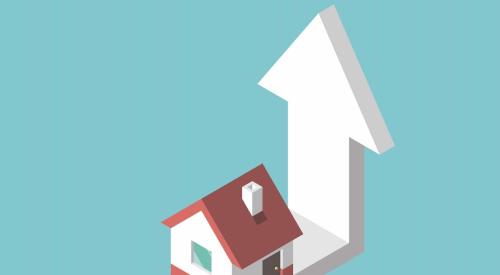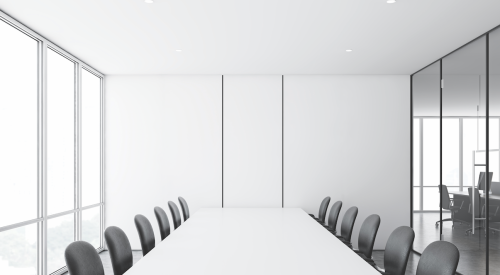It’s no secret that the home building business doesn't have tremendous gross margins. If you believe in the traditional 20/60/20 model, where 20% of your cost is land, 60% is sticks and bricks, and the final 20% is everything else, turning a profit is tough in any environment.
So how can you possibly predict your profit before taking on a project and keep as much of that last 20% in your pocket? Here are nine smart strategies that can help.
1. Know your total land cost
Land costs are the single most expensive part of any project. But the purchase cost isn’t necessarily your total cost. If the land isn’t prepared appropriately, you’ll be putting more into it than the purchase price.
What kind of condition is it in? Are you going to need to take out or bring in dirt? Is it graded properly? What will landscaping cost, including irrigation and all the typical exterior items? We tend to focus more on the structure and less on the lot, so it’s easy to get nicked as a result. Walking the land and understanding what it’s going to take before you start is one of the best ways to protect your profit.
2. Get the take-off right
Land may be the biggest single cost factor, but it’s by no means the only one. If sticks and bricks are 60% of your budget, there’s certainly plenty more to consider, like labor.
The point is, you need a reliable and precise estimating process, so you know exactly what the job requires before you sink the first shovel. Know the physical, human, and other resources required and understand that cost structure at the house level. With that number, you can calculate how many houses you need to sell to break even or make a reasonable profit. That’s your take-off. Get that right, and you’re good to go.
3. Build fewer floor plans
Unless you’re building homes for wealthy clients and can get away with cost-plus pricing, you'll need to find efficiencies if you want to predict and realize a reasonable profit. One of the best ways to do that is by building fewer floor plans.
Production builders understand this strategy better than anyone. They generally have three to five standard floor plans and can manage profitability fairly well. They may modify each plan slightly to meet the needs of buyers, but they’re generally well optimized for both the customer and the builder. That means optimal profit, too.
4. Have fewer variables
You also should limit variables in finish selections as much as possible. Cabinets are a good example. If custom cabinets are on the table for every home, and you’re a fixed-price builder, you’ll have a hard time estimating their cost from house to house. Flooring is another example that has seemingly limitless variables in material and labor costs. How many hours have you lost pricing out exotic tile materials and complicated install patterns? And, when you’ve finished those estimates, how often has the customer tried to haggle the price after doing “research” online? A much better approach is a predefined and comprehensive list of personalization options. When you limit the variables, you see fewer change orders. The fewer the change orders, the more predictable the profit.
5. Create economies of scale
When General Motors builds cars, it knows what each vehicle costs because they build thousands of them on a predictable schedule. You may not build that many homes, but you can apply the same principle to purchasing. By planning in advance and knowing exactly how many 2 x 4s, beams, and parts you’ll need, you create economies of scale that lower your cost. By building a backlog of presales and evenly spacing those starts through the year, you’ll create a predictable stream of work for your trade partners and lower that cost structure even further. Then, when you become the jobsite of choice among your trade partners, you’ll create friendly competition among them, which is never bad for your bottom line.
6. Facilitate the trades
Economies of scale don’t just apply to pieces and parts. They’re just as valuable for your trade partners.
When you're consistently building a handful of floor plans, it’s easy to set up standard pricing with your trades. They know how many electrical outlets they need to install, and that you’ll be using the same tile and faucet brands from job to job. Consistency allows them to be precise with their estimates and purchasing. It also allows their teams to be more efficient. If you’re self-developing a very consistent community, they're able to send one crew out and work through multiple houses at once. They might even be able to rough two houses a day instead of spending several days on a single custom job. Everyone gets more done and makes more money.
7. Use peers to benchmark
Pricing is another area where production and franchise builders have a distinct advantage. Whether it’s parts or labor, franchise builders have a large network of peers who are happy to share timely data that can help them make useful comparisons and shrewd decisions. With 40 or 50 builders in a system, there are a lot of experienced people to call and valuable data to sift through. With those benchmarks, you’ll know if you're in line or not pretty quickly. You’ll also have a powerful negotiating tool in your pocket when you go back to your vendors and partners.
8. Keep a tight schedule
“Time is money” may be a cliché, but it’s also true, and scheduling is a great place to save both.
If you build fewer floor plans with a consistent set of options, you’ll be more likely to keep your vendors on track and keep to a reasonable 100- to 120-day schedule. That will allow you to keep turning over your inventory and increase your returns.
9. Keep learning
There’s one more way to improve profitability, and it doesn’t take a lot of extra effort – just a few questions.
The army does what it calls an “after-action” following any engagement. Good companies do this, too. They get their departments or disciplines together after a project and ask what went well, what didn’t and where they can improve. You can, too. Every quarter, get your team together and do a key performance indicator (KPI) review on your most recent closings. Find out how you did on costs, cycle time and customer satisfaction. If you were off somewhere or missed targets, find out why. Then, make a plan to improve. Learning is the key to continuous improvement, and every little bit helps.













